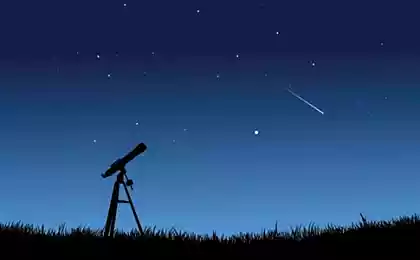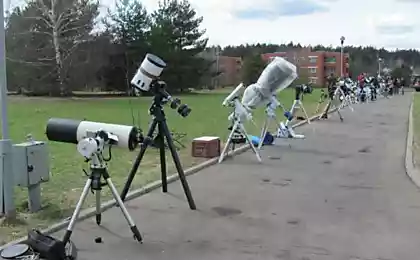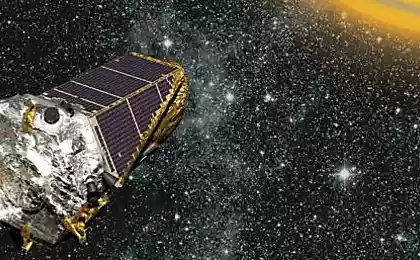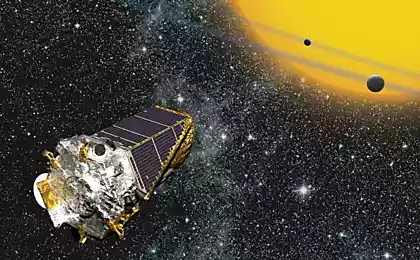1722
K2: «The second light" "Kepler"
I think everyone who is even slightly interested in space, know that the most successful project to search for exoplanets space telescope "Kepler" some time ago started a technical problem. This, in general, is not surprising, because the satellite and so exceeded the plan of his work: a three and a half years, he has worked without any problems for more than 4 years.

"Kepler" through the eyes of an artist. (Credit: NASA / Kepler mission / Wendy Stenzel)
Specialists NASA, however, has not abandoned the machine as it was, for example, recently passed enthusiasts satellite ISEE-3 . Instead found a way to continue the work of the satellite in several altered mode. So the "Kepler" will continue to delight fans and professionals with new discoveries, but now as a project K2.
How to work "Kepler» h4> Let me first recall as "Kepler" worked initially.
K2 - use the sun! H4> Engineers NASA, however, a little smash his head and brought together various proposals received by it and found an elegant way to extend the life of a useful tool. Since the two gyro still, serviceable, and you can use them on, thought they, but need to find something to third, that would already firmly telescope in space. And so was the third sun.

"Kepler" through the eyes of an artist. (Credit: NASA / Kepler mission / Wendy Stenzel)
Specialists NASA, however, has not abandoned the machine as it was, for example, recently passed enthusiasts satellite ISEE-3 . Instead found a way to continue the work of the satellite in several altered mode. So the "Kepler" will continue to delight fans and professionals with new discoveries, but now as a project K2.
How to work "Kepler» h4> Let me first recall as "Kepler" worked initially.
Job "Kepler" to detect extrasolar planets based on the method of transit photometry. The essence of the method is very simple. If a distant star has a planet, and its rotation this planet passes over the disk of the star, the apparent brightness of the light will be periodically reduced by a small amount depending on the diameter of the planet and the radius of its orbit.
Simple animation showing the essence of the transit method. (Credit: NASA Kepler Mission / Dana Berry)
This darkening can be detected sufficiently sensitive photometer. Installed on the "Kepler" equipment has a sensitivity of 20 ppm (parts per million) for solar-type stars of the 12th magnitude visible when observed for 6, 5 hours. For comparison, the natural fluctuations of brightness of the Sun is about 10 ppm, a central transit of the Earth causes the darkening at the level of 80 ppm, and lasts about 13 hours.
The field covered by the camera "Kepler" is 105 square degrees. It fell more than 100,000 stars for the desired brightness, for which it was necessary to maintain a continuous watch. After the eclipse for Earth-like planets usually lasts only a few hours, and happens about once a year, and for the reliable detection of the planet must fix darkening three or four times.

The field of view of "Kepler". (Credit: NASA / Ames / JPL-Caltech)
It is because of these considerations, "Kepler" has always looked at the same point of the sky (which lies outside the ecliptic that the sun did not prevent observation). Stabilization of the telescope in one direction is achieved through four gyroscopes, one of which broke July 12, 2012 - more than a year before the end of the main phase of the mission. Three gyroscopes in principle sufficient to stabilize the device in space, but when in May 2014 and broke the second of gyroscopes, the mission, in fact, come to an end. The remaining two gyros to stabilize the machine was not enough.
K2 - use the sun! H4> Engineers NASA, however, a little smash his head and brought together various proposals received by it and found an elegant way to extend the life of a useful tool. Since the two gyro still, serviceable, and you can use them on, thought they, but need to find something to third, that would already firmly telescope in space. And so was the third sun.
The most amazing thing is exactly how the Sun will capture device. The intended use ... light pressure exerted by the photons emitted by the Sun to the satellite! Yes, of course, this pressure is not very large, but other forces in space is small, so it should be enough to equalize the "Kepler" regarding our star.
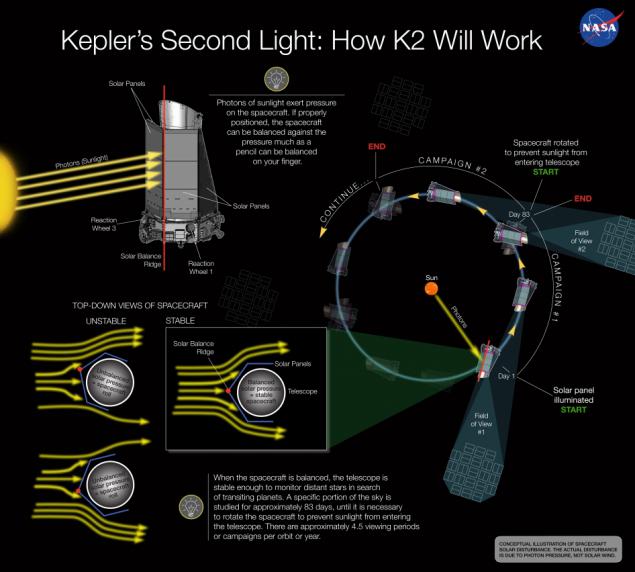
Infographics as will work K2. (Credit: NASA Ames / W Stenzel) in high resolution.
The problem, however, lies in the fact that for reliable stabilization device should be oriented substantially parallel to the plane of the ecliptic. This means that the Sun will periodically enters the field of view of the telescope, and bring him out. Therefore, the draft second life "Kepler", called K2, is not observed for the same point in the sky, and for nine, every 83 days changing them - periodically as if turning away from the sun.
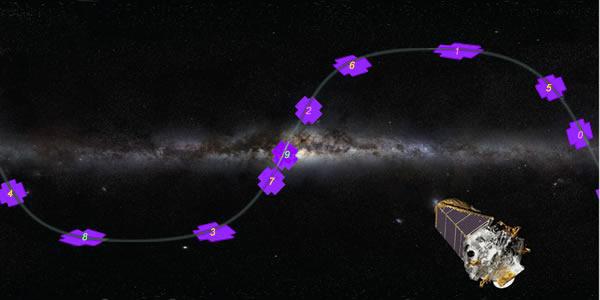
Location nine areas K2 observing the sky. (Credit: ESO / S. Brunier / NASA Kepler Mission)
During the mission, K2, which will last 4 years, will promonitoreno about 100,000 stars. Of course, the efficiency of detection of exoplanets and fall due to the deterioration of stabilization, and because of the fact that it will be impossible to observe the same star continuously, but despite this, the scientists hope to obtain new data on exoplanets. First of all we are talking about monitoring colder than the Sun, stars, systems which are potentially habitable planets revolve in smaller orbits and make a full rotation in less time.
In addition to exoplanets, the project will also observe the K2 for the bright galaxies and supernovae.
The proposed approach has been tested on the vehicle, and was approved by NASA in May. And on May 30 mission officially started collecting scientific data. The first results seem to be waiting for the beginning of next year, so we'll wait.
Some sources used h4>
- Planet-hunting Kepler telescope back in action - SPACEFLIGHT NOW
- A Sunny Outlook for NASA Kepler's Second Light - NASA
- Kepler's Second Light: How K2 Will Work - NASA
- Kepler Mission Manager Update: K2 spacecraft operation tests continue - NASA
- Kepler Mission Manager Update: K2 Has Been Approved! - NASA
- Кеплер (Telescope) - Wikipedia
- Kepler (spacecraft) - Wikipedia < /
Source: habrahabr.ru/post/225705/



